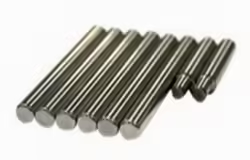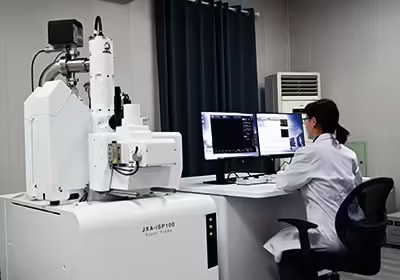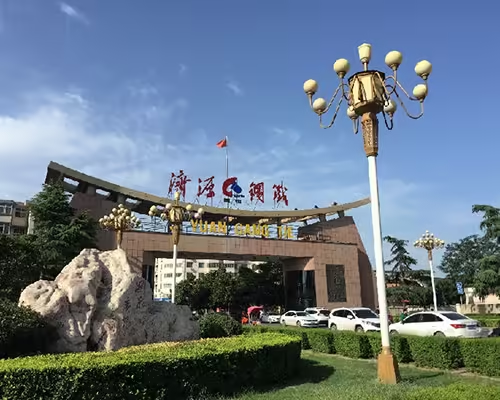
4140 Mechanical Properties: 7 Performance Boosters
Table of Contents
Introduction

When it comes to materials that offer a perfect balance of strength, toughness, and versatility, 4140 steel stands out as a top choice. Renowned for its exceptional 4140 mechanical properties, this alloy is widely used in industries ranging from automotive to aerospace. But what makes 4140 steel so special? In this blog, we’ll explore seven ways its 4140 mechanical properties enhance performance and why it’s a go-to material for engineers and manufacturers. Additionally, we’ll delve into the results of heat treatment simulations and their impact on the material’s performance.
What Are 4140 Mechanical Properties?
4140 steel is a chromium-molybdenum alloy steel known for its high strength, toughness, and wear resistance. Its unique composition includes elements like chromium, molybdenum, and manganese, which contribute to its excellent 4140 mechanical properties. These properties make it ideal for applications requiring durability and reliability under stress.
Key Characteristics
- High Tensile Strength: Resists deformation under heavy loads, a hallmark of 4140 mechanical properties.
- Excellent Toughness: Withstands impact and shock without cracking, a key feature of 4140 mechanical properties.
- Wear Resistance: Maintains integrity in abrasive environments, thanks to its 4140 mechanical properties.
- Good Machinability: Easily shaped and processed for complex designs, enhancing its 4140 mechanical properties.
Booster 1: Superior Strength for Heavy-Duty Applications
One of the standout 4140 mechanical properties is its high tensile strength. With a tensile strength of up to 950 MPa, this material can handle heavy loads and extreme stress without failing. This makes it ideal for components like gears, shafts, and axles that require durability under pressure.
Booster 2: Exceptional Toughness for Impact Resistance

4140 steel’s toughness is another key performance booster. Its ability to absorb energy and resist fracture makes it suitable for applications subjected to sudden impacts or shocks. For example, it’s commonly used in manufacturing tools and equipment for construction and mining industries.
Booster 3: Wear Resistance for Longevity
Wear resistance is a critical factor in many industrial applications, and 4140 steel excels in this area. Its chromium and molybdenum content form hard carbides that protect against abrasion, ensuring longer service life for components like bearings and dies.
Booster 4: Heat Treatment Versatility
The mechanical properties of 4140 steel can be further enhanced through heat treatment. Processes like quenching and tempering increase its hardness and toughness, making it adaptable to a wide range of applications.
Heat Treatment Effects
| Process | Effect on 4140 Steel |
|---|---|
| Annealing | Improves machinability |
| Quenching | Increases hardness |
| Tempering | Reduces brittleness |
Heat Treatment Simulation and Mechanical Properties
To optimize the performance of 4140 steel, heat treatment simulations were conducted using different tempering temperatures. The heat treatment process included normalizing at 905°C, quenching at 870°C with water cooling, and tempering at temperatures of 580°C, 600°C, 620°C, 640°C, and 650°C.
Tensile and Impact Test Results
Tensile tests were performed on cylindrical specimens with dimensions of φ5mm×60mm at room temperature. Impact toughness tests were conducted on Charpy V-notch specimens with dimensions of 10mm×10mm×55mm at -18°C. The results are summarized in the table below.
| Tempering Temperature (°C) | Tensile Strength (MPa) | Impact Toughness (J) |
|---|---|---|
| 580 | 1050 | 25 |
| 600 | 1000 | 45 |
| 620 | 950 | 55 |
| 640 | 900 | 60 |
| 650 | 880 | 65 |
Microstructure and Carbide Analysis
The microstructure of the specimens was analyzed using transmission electron microscopy (TEM) to understand the impact of tempering temperature on carbide morphology and distribution.
- 580°C Tempering: The microstructure showed the presence of long, strip-like carbides with sizes ranging from 100nm to 3μm. These carbides retained the original martensitic orientation, which negatively impacted impact toughness.
- 600°C Tempering: The carbides became more uniformly distributed, with strip-like carbides reducing in size to below 500nm and the appearance of granular carbides around 50nm. This change significantly improved impact toughness.
- Higher Temperatures (620°C–650°C): The carbides continued to become finer and more uniformly dispersed, further enhancing the material’s toughness.
The transformation of carbides from strip-like to granular and their increased dispersion were identified as the primary reasons for the improvement in impact toughness at higher tempering temperatures.
Booster 5: Good Machinability for Complex Designs
Despite its strength, 4140 steel is relatively easy to machine. This property allows manufacturers to create intricate designs and precise components without compromising on durability.
Booster 6: Fatigue Resistance for Cyclic Loading
Components subjected to repeated stress cycles require high fatigue resistance, and 4140 steel delivers. Its ability to withstand cyclic loading makes it a preferred choice for parts like crankshafts and connecting rods.
Booster 7: Cost-Effectiveness for Budget-Conscious Projects
While offering premium mechanical properties, 4140 steel remains cost-effective. Its durability and longevity reduce the need for frequent replacements, making it a smart investment for long-term projects.
Contact Us

At Henan Jiyuan Iron & Steel (Group) Co., Ltd., founded in 1958, we are committed to providing high-quality steel products and exceptional services. With over 8,000 employees, including 3,000 technical professionals, and assets totaling CNY 25 billion, we specialize in producing high-quality steel bars, wire rods, construction steel, and precision-processed steel.
Our Service Center offers the following:
- Tech Support: Expert guidance to meet your specific needs.
- Order Production: Efficient and customized production services.
- Processing Service: Precision processing for complex designs.
- Inspection Services: Rigorous quality control to ensure excellence.
Contact us today to learn more about how our products and services can enhance your projects. Let’s build a long-term partnership together!
Conclusion
The mechanical properties of 4140 steel make it a powerhouse material for a wide range of applications. From its superior strength and toughness to its wear resistance and cost-effectiveness, this alloy offers seven key performance boosters that set it apart. The heat treatment simulation results further demonstrate how tempering temperature can optimize its performance, particularly in improving impact toughness. Whether you’re designing heavy-duty machinery or precision components, 4140 steel is a reliable choice that delivers exceptional results.
FAQ
What are the primary 4140 mechanical properties?
The primary properties include high tensile strength, excellent toughness, wear resistance, and good machinability.
How does heat treatment affect 4140 steel?
Heat treatment processes like quenching and tempering enhance its hardness and toughness, making it more durable and versatile.
What industries use 4140 steel?
It’s widely used in automotive, aerospace, construction, and manufacturing industries for components like gears, shafts, and dies.
Is 4140 steel suitable for high-stress applications?
Yes, its high strength and toughness make it ideal for applications subjected to heavy loads and extreme stress.
Why is 4140 steel cost-effective?
Its durability and longevity reduce the need for frequent replacements, making it a cost-effective choice for long-term projects.






